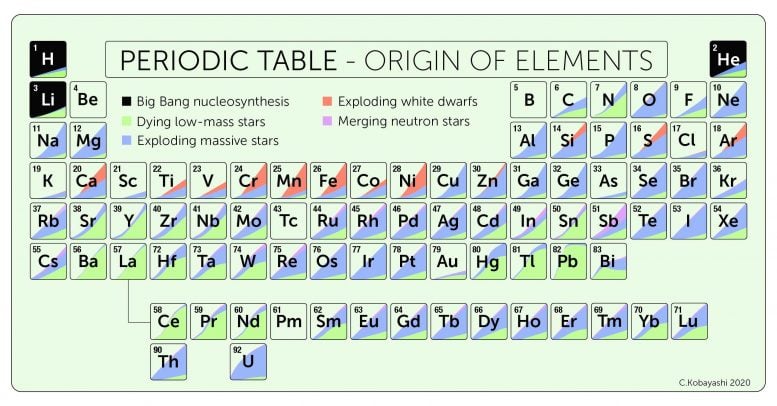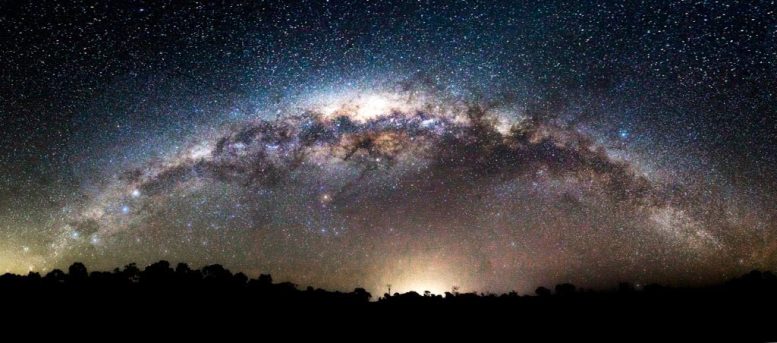Too Much Heavy Metal Causes Stars To “Act Quite Weirdly”
By
Stars are giant factories that produce most of the elements in the Universe – including the elements in us, and in the Earth’s metal deposits. But what stars produce changes over time.
Two new papers published in MNRAS shed light on how the youngest generation of stars will eventually stop contributing metals back to the universe.
The authors are all members of ASTRO 3D, the ARC Centre of Excellence for All Sky Astrophysics in 3 Dimensions. They are based at Monash University, the 
Periodic table with origin of the elements. Credit: Chiaki Kobayashi et al Artwork: Sahm Keily
These “metal-rich” stars, like our Sun, spew out their products into space, enriching the composition of the galaxy over time.
These objects affect us directly as around half of the carbon and all elements heavier than iron are synthesized by stars like our Sun.
About 90 percent of all the lead on Earth, for example, was made in low-mass stars which also produce elements such as strontium and barium.
But this ability to produce more metals changes depending on the composition of a star at its birth. “Introducing just a tiny bit more metal into the stars’ gas has really large implications on their evolution,” says Giulia Cinquegrana. Her paper[2] uses modeling from the earlier paper to study the chemical output of metal-rich stars.
“We discovered that, at a certain threshold of initial metal content in the gas, stars will stop sending more metals into the Universe over their lifetime,” Cinquegrana says.
The Sun, born about 4.5 billion years ago, is a typical “middle-aged” star. It is “metal-rich” compared to the first stellar generations and has a heavy element content similar to many other stars in the center of the DOI: 10.1093/mnras/stab3205
DOI: 10.1093/mnras/stab3379
Read More: Too Much Heavy Metal Causes Stars To “Act Quite Weirdly”


